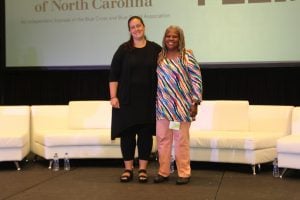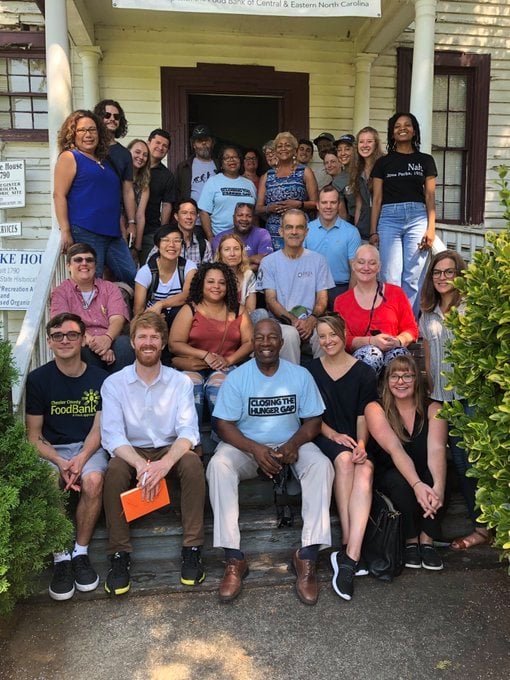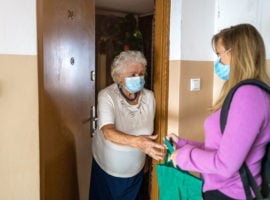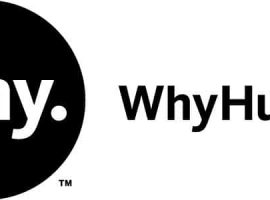The Closing the Hunger Gap Network and biennial conference are ambitious initiatives undertaken by food banks, pantries, food systems changers, and non-profits (including WhyHunger), that are committed to seeking a solution to hunger that goes beyond food distribution, to a model that addresses the root causes of hunger with a racial, social, and economic equity lens. As a first-time participant, with a background in food justice and food systems change, I was cautiously excited about what it meant for organizations from the charity side of the food system spectrum to move more toward justice.
This biennial conference began in 2013 in Arizona with 170 organizations from 33 states. This year the 3-day conference convened in Raleigh, North Carolina.
The specific goal of this year’s gathering was not only to educate and share best practices, but to mobilize organizations and participants past and present to strengthen the Network’s membership. The conference organizers also particularly wanted to center the South, capitalizing on the historic significance of civil rights organizing that is ever present in North Carolina and surrounding areas. Yet, record rates of poverty and chronic food insecurity seem intransigent despite historic and ongoing organizing. This year’s theme of “Roots, Justice, Resilience” made North Carolina a perfect setting for such a conversation.
The framework of membership is built around a commitment to support, “ a national effort of hunger relief organizations to shift from a charity model to a social justice model; to build a national presence to promote a collective voice of organizations and their constituents calling for food to be recognized as a human right; and support of grassroots movements led by the people most impacted by the root causes of poverty and hunger.”

The keynote started off the theme that centered justice and movement building as the true solution to ending hunger. Dr. Liz Theoharis, co-founder of the Poor People’s Campaign and Karen Washington, James Beard award winning urban farmer and WhyHunger Board member, spoke from different perspectives that equally challenged the institutionalization of charity food models. Dr. Theoharis, an ordained minister, challenged the use of Biblical scripture to justify poverty and charity. She read and interpreted a verse from the Bible that counteracts the necessity and inherent “good” of charity food, saying that societal prosperity is achieved by justice. Karen Washington invited us to change the lens of those who want to help her from viewing her community as “powerless and poor” to “powerful.” The audience reacted with applause when she said that “either you’re going to share your power, or we will take it from you.”
The keynote ended in a standing ovation and participants made their way to the breakout sessions.
The breakout sessions captured all of those themes expressed in the keynote (from Root Causes and Intersectionality to Transforming Systems) and ensured that participants would experience a varied source of information and tools. One of the sessions led by WhyHunger’s U.S. Programs Director, Suzanne Babb, was “Organizing in Emergency Food Programs.” The format was a World Café style, where organizations that had managed to shift their organizational structure, goals, and approach had a sort of interview-like, open house for other Emergency Food Providers. The Hub, a community food pantry in Bloomington Indiana, discussed its participation in creating a food policy council and taking their patrons on trips to the farmer’s market, which led to the creation of their own farm-stand. Neighbors Together, a soup kitchen and community organization in Brooklyn, New York, highlighted the leadership development work and housing campaigns they created alongside their clients. Both organizations gave examples and best practices of how they embodied and implemented the work of shifting from a system of charity to one focused on addressing the root causes of hunger.
Such real-world examples and testimonials are integral to building true solidarity and creating real change. Particularly at a conference where attendees’ goals and actions around this type of transformation are scattered across the spectrum from those reinforcing a charity model to those building a model rooted in social justice.
In the hallway path where all attendees for the sessions had to pass through, there was a booth by supermarket chain Food Lion, one of the conference sponsors. They asked participants to take a picture in front of a logoed backdrop with an empty plate for their social media promotional project #NoEmptyPlate. With each photo, the supermarket headquartered in Salisbury, North Carolina (2 hours from where the conference was held) promised to donate one meal. Food Lion launched its charity arm, Food Lion Feeds, in 2014, with an initial goal to feed 500 million people by 2020. Having superseded that goal by May 2019, they vowed to reach 1 billion by 2025 in the 10 states.
Food Lion workers and volunteers canvassed participants to take pictures, appealing to the selflessness of those in the food charity world, saying “Do you have a few seconds to stop child hunger?” And to those that wouldn’t stop for them, “Don’t you want to end hunger?” By October, they announced that they had succeeded in reaching the one million participants and will donate one million meals through the social media initiative in September.
The minimum wage in North Carolina is currently at $7.25, the federal minimum, and according to Glassdoor (a job site that also allows past and current employees to rate their employers), Food Lion is known for high turnover of part time employees and low wages. A job advertisement for an Assistant Deli Baker has a range of $8-$11. This dichotomy of both paying poverty wages and engaging in charity work is typical of the supermarket industry, Walmart being the top offender.
One of the tenets of CTHG is examining and addressing the root causes of hunger, economic inequality being one of them. In 2016, 38,000 of the 2.5 million workers in North Carolina worked at the $7.25 minimum wage—making $10,000 below the poverty line—literally poverty wages. Federal legislation was passed in the U.S. House of Representatives to increase the minimum wage to $15/hour by 2025 for the 21 states, including NC. The bill died in the Republican ruled Senate.
Emergency Food Emerges
The contrasting 2025 goals of Food Lion and proposed legislation reflect the inherent tension in Closing the Hunger Gap. Emergency Food Providers in one breakout session challenging the growth of Emergency Food expressed defensiveness and frustration as they seemed to take personally the social justice terminology of dismantling structures and examining privilege. They highlighted the work that their pantry or food bank did, having at the ready statistics of the millions of pounds they gave away, and how much of that food is fresh fruits and vegetables. Pantries heard and responded to critiques that the food that they are providing is contributing to worsening diet related illnesses and began finding ways to counteract it.
These incremental adjustments to the emergency food system had been ongoing since its national emergence in the 1980’s. The industry’s steady growth began when the Reagan administration took the position that government was not the solution to the rising inequality in America. Recession hit that decade, a result of globalization and the loss of steady industrial jobs. The poverty rate was over 17% (for reference, it is currently at 12%) and Americans turned to church food pantries who then turned to dairy farm surpluses (the birth of the often invoked “government cheese”). The government loosened legislation to allow for corporations to donate food without being liable for causing illness. Food banks developed as a sort of middle man between managing the excess of the agriculture industry and the food pantries where the “new poor” would get food. Simultaneously, benefits, such as food stamps, were slashed by $2 billion in 1983 alone. The decision to label the problem as “hunger” as opposed to poverty was a deliberate one: a 1983 Presidential Taskforce to study the efficacy of food assistance programs stated it plainly: hunger wasn’t the cause of unemployment or poverty, but the recent economic downturn. So the permanent solution to hunger was economic growth; charity based emergency food programs would stem the tide until the economy would stabilize itself.
Our long lens on history has asserted that not to be true. But anti-hunger advocates even at the time had resisted this approach, even as they worked to establish what we now know as the emergency food system. Mark Winne, a preeminent food advocate, noted that this direction was in response to the administration’s inaction and that they were taking the role of government. Susan Fisher, the Deputy Director of Second Harvest, testified before the 1983 taskforce that surplus commodities and food donated by the private sector would never be the answer to the problem of hunger. This was never meant to be permanent. But the proliferation of emergency food over the last 4 decades had only been interrupted by slight pivots and edits throughout the years. Client-choice models have sprung up to make the process of obtaining food more dignified. Fresh food, even farms owned and managed by Emergency Food Providers are responding to worsening diets of those whose lives they are working to improve.
At the conference, the first ever panel with “Experts by Experience,” entitled, “Nothing About Us, Without Us,” featured those on the receiving side of the food pantries. Each panelist detailed a story of chronic poverty, trauma, and general instability. I sat in a familiar discomfort, listening to their pain, feeling like a voyeur who would later be asked to compensate somehow. While heart strings were being tugged, one of the conference participants whispered to me, “There’s something silencing about this panel.” We are both Black women looking at a panel of mainly white women. “They are personalizing and individualizing a problem that is structural. There is a lack of connection between the individual and the structural.”
It should be noted that that context and connection between the personal and structural is what Closing the Hunger Gap aims to provide and that it was provided in other iterations of the conference. The personal stories in the panel were essential part of the ongoing narrative, but one that could be easily used to perpetuate a charity-based model.
If the conference were a microcosm of the outside world, a structural analysis would look something like this: In 2018, 29 percent of U.S. households who worked for incomes below the poverty line were food insecure. Food Lion, for example, could examine how their current pay structure contributes to poverty wages for their workers. They might be able to see, like many corporations engaged in charitable work, how their workers don’t make a livable wage and therefore might have to both be on their workforce and on the receiving end of their charity. A structural analysis that zooms out from the individual need for food, which is both immediate and necessary to address, might incorporate advocacy for higher national or state minimum wage. It might work to ensure that those working for companies who are charitably concerned with decreasing hunger, are not actually experiencing it.
Survival Pending Revolution
In 1969, the Black Panther Party established one of its best-known Survival programs, The Breakfast Program. They saw that the children in the community were not getting sufficient food before school. At the time, there wasn’t a National Breakfast program in schools and BPP’s organizing, though villainized, is now credited with shaming the federal government into creating one nationwide.
The breakfast program was just one of the 60 community or survival programs the party undertook. And while they were mostly known for the “by any means necessary,” strain of civil rights, they understood one fundamental truth in their fight for the oppressed:
“We recognized that in order to bring the people to the level of consciousness where they would seize the time, it would be necessary to serve their interests in survival by developing programs which would help them to meet their daily needs…these programs satisfy the deep needs of the community but they are not solutions to our problem. That is why we call them survival programs, meaning survival pending revolution.”
Mark Winne’s post on “The Fundraising Letter I’d Like to Receive,” listed as a resource on the CTHG website, imagined a sort of inverted scenario from the way food banks and pantries are currently structured. Instead of listing the increase in the poundage of food, a measure of success is a reduction of food distributed. Instead of “compelling story” about a community member needing the food pantry, a success story of individual success met by structural changes: livable wages, childcare, and community food sovereignty. More importantly, these changes were achieved partially by a shift in energy by the food bank. Instead of training their clients to solicit corporate donations, they were trained to talk to lawmakers to change policy. Volunteerism was directed to making phone calls and lobbying to improve legislation that directly addressed the root causes of hunger.
Such a shift isn’t easy to make, but a necessary one. Since the modern inception of food banks as we know it for the past almost 40 years, there’s been little to no improvement in food insecurity in America. When the census bureau started collecting data on food insecurity 1995, the rate was 12 percent. In 2018, the overall rate was 11.1 percent. The proliferation of emergency programs has done very little to move the needle on the very issue they were created to address.
For emergency food providers, there are many examples of like-minded organizations that created programing that addressed immediate needs, while simultaneously addressing the causes for the need. CTHG member organizations such as The Stop in Toronto, Neighbors Together in Brooklyn, NY, and Mother Hubbard’s Cupboard in Indiana have found sustainable ways to both address the emergency and the root. Closing the Hunger Gap is working to engage organizations who are willing to do the work to change from a system of charity that’s more invested in the self-sustenance of the organization, to one rooted in justice as the only means to ending hunger. But first, leaders within the organization must decide that that’s what is needed, even if they aren’t sure what the next step is. What’s known is that it will take a whole lot of work and intentionality to undo what has been the status quo for so long. But it won’t start until those tasked with upholding the charity systems, decide to give up the power they’ve amassed, and essentially work their organizations out of existence.





